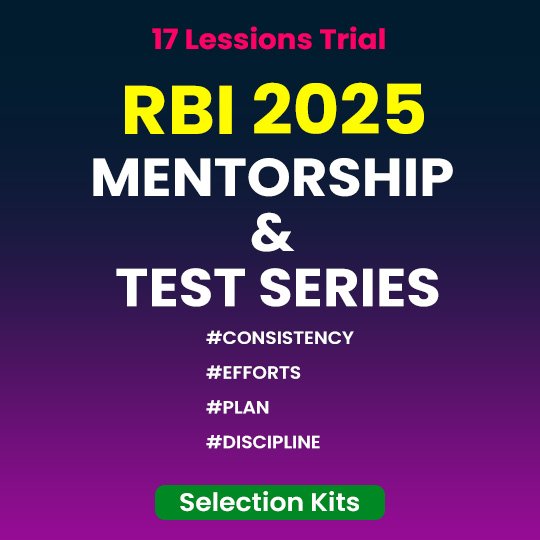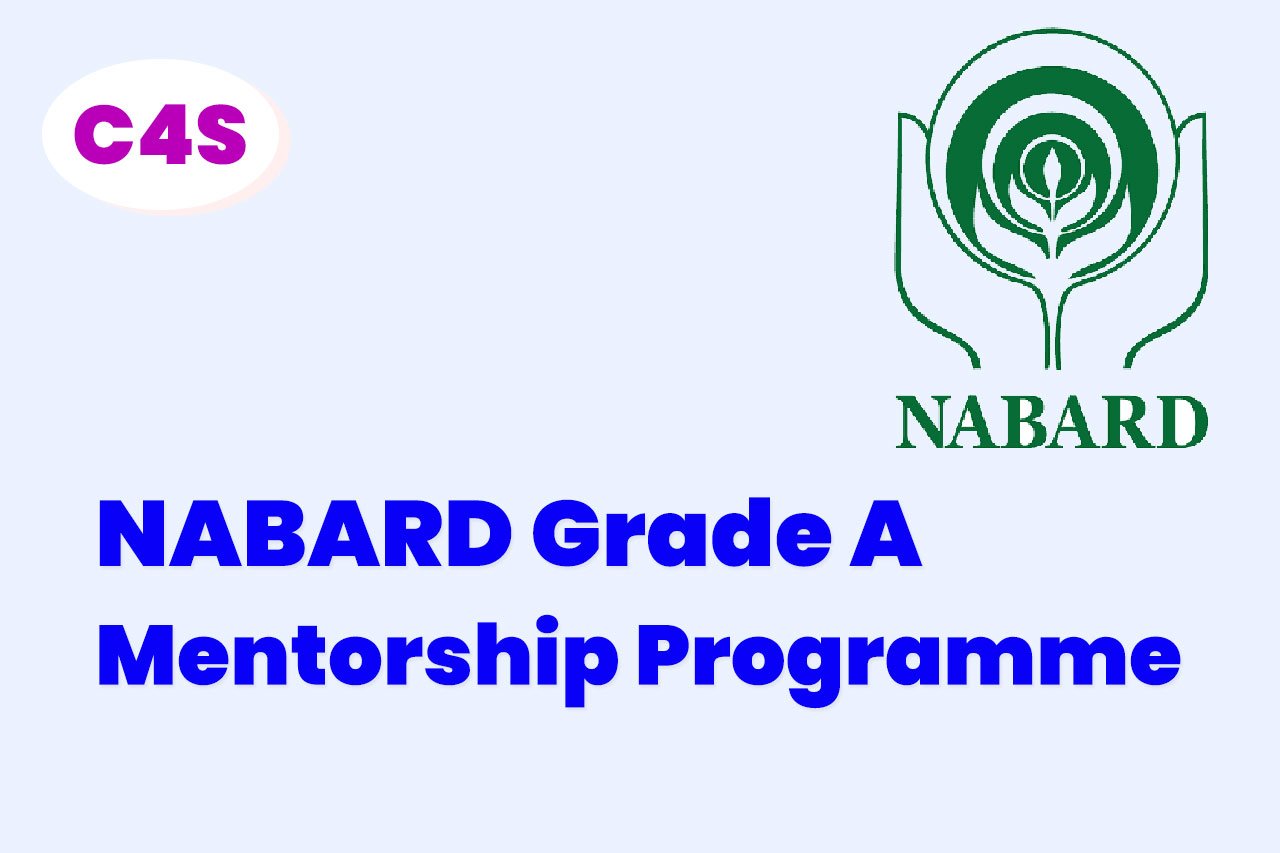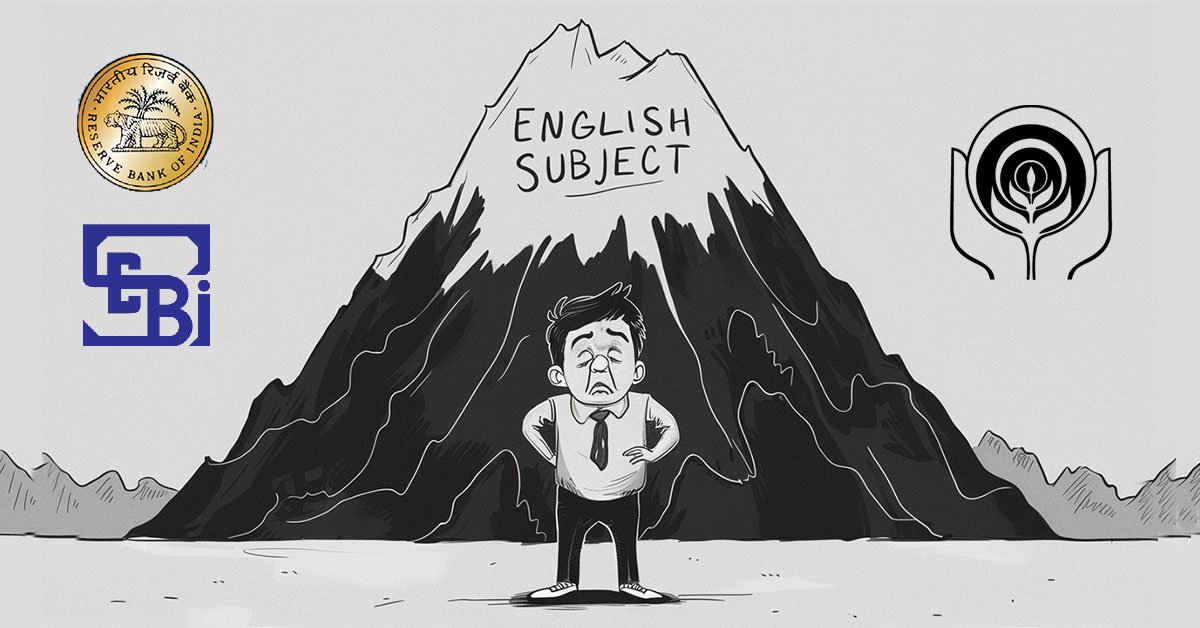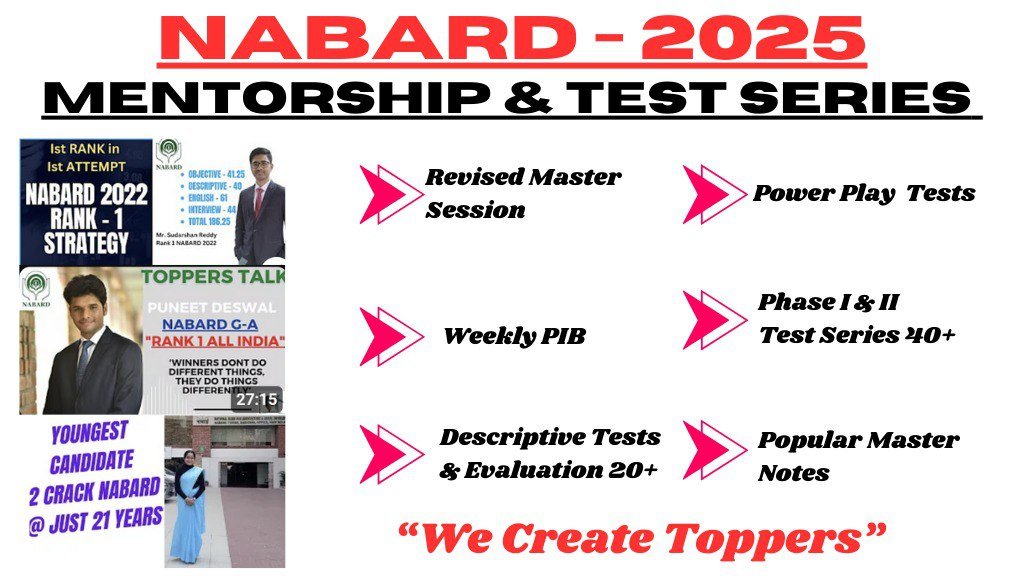Daily Current Affairs Quiz
27 March, 2025
International Affairs
1. U.S. Intelligence Report Identifies China as Primary Global Threat
China’s Growing Security Threat
- China remains the top global threat to U.S. national security, as per the Annual Threat Assessment released Tuesday.
- Key concerns include:
- Coercive pressure on Taiwan.
- Expanding cyber operations targeting U.S. infrastructure.
- The report links China’s rise in global power to the U.S. strategic pivot to the Asia-Pacific region under Barack Obama.
Strengthening Alliances: The ‘CRINK’ Nations
- The report highlights increasing coordination among:
- China
- Russia
- Iran
- North Korea
- The China-Russia alliance is identified as the “most persistent” threat to U.S. influence.
Beijing’s Response
- China dismissed the report as biased, accusing the U.S. of exaggerating its threat.
Other Security Threats Identified
- Besides state actors, the report highlights concerns about transnational criminals, including:
- Mexican drug cartels.
- Islamic extremist groups.
The deepening ties between CRINK nations could challenge U.S. global power, with China and Russia leading the geopolitical shift. The increasing cyber threats and regional conflicts further complicate international stability.
2. India-New Zealand Free Trade Agreement (FTA)
Background & Strategic Importance
- Renewed FTA talks after a decade-long hiatus.
- India & New Zealand aim to finalize the deal within 60 days.
- Strategic timing:
- New Zealand’s elections in October create urgency.
- India’s Indo-Pacific influence is growing.
- Global trade protectionism is increasing, especially with the US imposing reciprocal tariffs.
- India’s recent FTAs with UAE, Australia, and EFTA demonstrate its aggressive trade strategy.
Challenges in Negotiations
- Key sticking points:
- Tariff disparities:
- New Zealand’s average import tariff is 2.3% (many duty-free items).
- India has higher tariffs, making a traditional FTA less attractive.
- Dairy products:
- India opposes dairy imports due to political sensitivities.
- New Zealand wants dairy included but faces resistance.
- Wine tariffs:
- India imposes 150% import duty on wine (one of the highest globally).
- New Zealand seeks reductions, possibly following India-Australia FTA’s phased model.
- Tariff disparities:
Trade Relationship Overview
- Bilateral trade in 2024: $1.54 billion
- India’s Exports to New Zealand ($752 million total):
- Medicines, gems & jewelry, textiles, and agricultural equipment.
- India’s Imports from New Zealand ($791 million total):
- Iron & steel, aluminum, forestry products, wool, apples, lamb, and dairy.
- Services Trade Focus:
- India: IT, software services, fintech, telecom, and medical research.
- New Zealand: Education, tourism, and financial services.
- India seeks more work visas for skilled professionals.
Outlook & Implications
- Political will on both sides could drive rapid negotiations.
- India’s market access in New Zealand is limited due to its small size.
- A finalized FTA could boost India’s services exports and strategic position in the Indo-Pacific.
- Upcoming India-New Zealand cricket ties in 2026 could further strengthen diplomatic relations.
National Affairs
1. India’s Social Welfare Coverage: ILO Report
Context:
India’s social protection coverage has doubled from 24.4% in 2021 to 49% in 2024. The International Labour Organization (ILO) expanded its assessment, now recognizing 34 major central schemes (earlier only 7 were considered). India believes ILO’s 48.8% estimate is still an underestimation, as it does not include in-kind benefits or state-level programs.
Key Welfare Schemes Considered
- Employment & Pension: MGNREGA, Atal Pension Yojana (APY)
- Worker Benefits: Employees’ Provident Fund Organisation (EPFO), Employees’ State Insurance Corporation (ESIC)
- Social Security & Welfare: Midday Meal Scheme, Public Distribution System (PDS), Housing Schemes
Data Collection & Expansion Plan
- 10 states (UP, Rajasthan, Maharashtra, MP, Tamil Nadu, Odisha, Andhra Pradesh, Telangana, Karnataka, Gujarat) have been asked to submit data.
- The exercise will expand to all states and union territories for a more accurate assessment.
India’s Perspective on ILO’s Report
- India advocates for broader social protection indicators, including housing and food security under the UN Sustainable Development Goals (SDGs).
- Aadhaar-based encrypted tracking is expected to show two-thirds of India’s population has some form of social security.
India’s welfare reach has grown significantly, yet the full extent may not be reflected in global assessments. Government efforts continue to enhance data accuracy and ensure holistic welfare tracking. ILO and India are working together to refine the methodology for a more comprehensive social security evaluation.
2. GSAT-18
Context:
- Six transponders on GSAT-18 (launched in 2016) will remain unutilized until 2027 due to overlap with GSAT-14.
- The PAC report tabled in the Lok Sabha urged the Department of Space to be more economically cautious in planning projects involving public funds.
- Revenue loss of ₹117 crore has already occurred due to the non-utilization of these transponders.
GSAT-18
GSAT-18 is an Indian geostationary communication satellite, launched in 2016, designed to provide services in C-band, Extended C-band, and Ku-bands, supporting television, telecommunication, and other services.
- Purpose: GSAT-18 is designed to provide continuity and augment existing telecommunication, television, Digital Satellite News Gathering (DSNG), and VSAT services in India.
- Launch: It was launched on October 5, 2016, by an Ariane 5 ECA rocket from the Guiana Space Centre in Kourou, French Guiana.
- Transponders: It carries 24 C-band, 12 extended C-band, and 12 Ku-band transponders.
Department of Space’s Justification
- GSAT-14’s uncertain launch performance: GSAT-14 was launched on a GSLV development flight, and the risk of failure required redundancy.
- Ensuring continuity of service: GSAT-18 was designed to take over from GSAT-14 after its mission life ends in 2027 and will operate until 2032.
- Orbit spectrum protection: If spectrum remains unoccupied for over three years, priority for future usage is lost.
- Minimal additional cost: The extra transponders’ cost was insignificant compared to launching a separate satellite.
Economic Viability Concerns
- PAC questioned the financial logic of keeping six transponders idle for 11 years just to use them for five years.
- The committee also asked about maintenance costs during the idle period.
Cost Comparison
- The realization of GSAT-14, including six Ext C-band and six Ku-band transponders, cost ₹110 crore in 2014 (excluding launch costs).
- Launching a separate satellite would have been a much costlier alternative, according to the Department of Space.
While redundancy planning is critical for mission success and orbital spectrum rights, the PAC emphasized the need for better financial planning. The Department of Space must find ways to optimize costs and utilization to avoid revenue losses in future satellite projects.
Science & Tech
1. Quantum Computing, Majorana Particles, and the Neutrino Mystery
Microsoft’s Majorana 1 Chip
- Microsoft announced the Majorana 1 quantum chip, aiming to solve industrial-scale problems in years, not decades.
- Independent scientists expressed skepticism about the claim but acknowledged the technical challenge and potential impact.
- The chip is based on Majorana particles, a unique type of fermion where the particle is its own anti-particle.
- If two Majorana particles meet, they annihilate, releasing energy.
The Neutrino Connection
- Neutrinos are suspected to be Majorana particles.
- These elusive particles are the second-most abundant in the universe, produced in:
- The Big Bang
- Radioactive decay
- Supernovae and cosmic ray interactions
- Nuclear fusion in stars (e.g., the Sun)
- Despite their abundance, neutrinos rarely interact with matter, making them difficult to study.
The Quest to Measure Neutrino Mass
- Neutrinos exist in three flavors (electron, muon, tau), but their individual masses remain unknown.
- If neutrinos are Majorana particles, their masses could be determined through neutrinoless double beta decay (0vßß).
Beta Decay and the Search for 0vßß
- Beta decay occurs when an unstable nucleus transforms by:
- Converting a neutron into a proton, releasing an electron and an anti-neutrino.
- Converting a proton into a neutron, releasing a positron and a neutrino.
- A rare third form involves double beta decay, where two neutrons transform simultaneously, emitting two electrons and two anti-neutrinos.
- If 0vßß exists, it would indicate that neutrinos and anti-neutrinos are the same particle, confirming the Majorana nature of neutrinos.
The AMoRE Experiment and Recent Findings
- AMoRE (Advanced Mo-based Rare process Experiment) in South Korea is searching for 0vßß in molybdenum-100 nuclei.
- Findings (Feb 27, 2024, Physical Review Letters):
- No evidence of 0vßß was observed.
- A Mo-100 nucleus would take at least 10²⁴ years to decay via 0vßß.
- Estimated neutrino mass: less than 0.22-0.65 billionths of a proton.
Implications for Physics
- Even a tiny neutrino mass challenges the Standard Model, which predicts neutrinos should be massless.
- If 0vßß is eventually detected, it will:
- Confirm neutrinos are Majorana particles.
- Help determine the absolute neutrino mass.
- Fill gaps in fundamental physics.
- The AMoRE team plans an upgraded search with 100 kg of Mo-100 for better detection chances.
Microsoft’s Majorana 1 chip is an ambitious step in quantum computing. The neutrino’s nature remains a major open question, with 0vßß experiments offering potential breakthroughs. The search continues, as any discovery will reshape our understanding of the universe.
Source: TH
2. Bedmap3
Overview of Bedmap3
- Bedmap3 is the most comprehensive dataset of Antarctica’s subglacial landscape, extending the previous Bedmap2.
- It incorporates 84 new aero-geophysical surveys from 15 data sources, adding 52 million more data points and 1.9 million line-km of measurements.
- Significant improvements in understanding major mountain ranges, deep interiors of East Antarctica, West Antarctic coastlines, and the Antarctic Peninsula.
Key Discoveries
Thickest Ice in Antarctica
- The thickest ice (4.7 km) is in Wilkes Land (76.052° S, 118.378° E), not Astrolabe Basin as previously thought.
- This thickness is more than half the height of Mount Everest.
- Average Antarctic ice thickness, including ice shelves, is 1.9 km.
Greater Ice Sheet Volume & Vulnerability
- Antarctica has more ice grounded below sea level than previously realized.
- This makes it more susceptible to melting from warm ocean water intrusion.
- Peter Fretwell (British Antarctic Survey) notes that Antarctica is more vulnerable than previously thought.
Climate Change & Sea-Level Rise Implications
- The Antarctic ice sheet significantly impacts global sea levels.
- Bedmap3 helps scientists predict sea-level rise by modeling ice sheet behavior under global warming.
- The study in Scientific Data (March 10) states that the Antarctic ice sheet’s response to climate change is the greatest source of uncertainty in future sea-level rise.
Future Research & Applications
- Better modeling of past and future ice sheet changes.
- Improved understanding of ice-bedrock interactions.
- Supports climate scientists in predicting the impact of global warming on polar ice.
Bedmap3 provides a more detailed and accurate view of Antarctica’s subglacial landscape, revealing increased ice vulnerability and enhancing our understanding of climate change effects on sea-level rise.
TH
Banking/Finance
1. GST Framework for Simplified Compliance
Context:
The Finance Ministry must streamline the GST framework by eliminating unnecessary procedures that complicate compliance. A revamped GST 2.0 should be developed after stakeholder consultations to enhance efficiency.
Simplifying Return Filing & Compliance
- Consolidation of Forms: Reduce complexity by merging GST return forms.
- Lower Filing Frequency: Smaller businesses (MSMEs) should have fewer compliance requirements.
- Tiered Compliance Approach: Different rules for small businesses vs. large enterprises to reduce the burden on MSMEs.
Enhancing the GST Portal
- Improve user-friendliness by providing step-by-step guidance to taxpayers.
- Strengthen the digital interface to ensure a seamless filing experience.
Addressing Compliance & Registration Issues
- Harsh Penalties for Errors: Honest taxpayers face criminal penalties for unintentional mistakes—PAC urges more lenient measures.
- Aadhaar-Based Authentication Challenges:
- Technical issues hinder registrations, delaying the ‘One Nation One Tax’ vision.
- PAC calls for resolving authentication bottlenecks.
Boosting Revenue Collection with AI & Data Analytics
- Declining Indirect Tax Contribution: Dropped from 38.76% (2017-18) to 36.92% (2019-20).
- Leverage AI & Big Data:
- Predict tax revenues more accurately.
- Improve tax compliance tracking.
Transparent Refund Processing & Grievance Redressal
- Define Clear Refund Timelines: Faster and more structured claim settlements.
- Regular Status Updates: Taxpayers should be informed at each stage of refund processing.
- Dedicated Grievance Mechanism: A separate system to handle refund-related complaints efficiently.
MSME-Specific GST Framework
- Fast-Track Return Filing & Refunds: Automate processes to ease compliance.
- Reduce Filing Frequency: Allow MSMEs to file returns less frequently.
- Simplified Online Reporting: A user-friendly digital system for small businesses.
The PAC’s recommendations aim to simplify GST compliance, reduce procedural burdens, and enhance revenue collection through technology-driven solutions and structured reforms.
2. RBI Governor Advocates Balanced Approach to AML & CFT Regulations
Need for Targeted Financial Regulations
- RBI Governor Sanjay Malhotra stressed the importance of precise laws to combat money laundering (AML) and terror financing (CFT).
- He warned against using broad regulatory measures that could unintentionally harm legitimate businesses and investments.
Addressing Compliance Burden
- Financial institutions face a high compliance burden due to multiple overlapping laws.
- The challenge is to balance security measures while ensuring smooth financial operations.
Risk-Based Approach to AML & CFT
- A risk-based strategy can help reduce unnecessary compliance burdens.
- However, Mr. Malhotra cautioned that no risk model is perfect, and regulators must continuously refine and improve assessments.
FATF Private Sector Forum in India
- The FATF Private Sector Collaborative Forum (PSCF) 2025 is being hosted in India for the first time.
- Discussions focus on global best practices to strengthen financial security without hampering economic growth.
RBI’s stance highlights the need for surgical precision in financial regulations—ensuring illicit activities are curtailed while maintaining a favorable environment for legitimate investments and economic growth.
3. Supreme Court Ruling Eases GST Compliance for Businesses
Context:
The Supreme Court dismissed CBIC’s petition, allowing businesses to correct clerical errors in GST filings even after the deadline, provided there is no revenue loss. The ruling upholds the Bombay High Court’s judgment in favor of Aberdare Technologies Pvt Ltd.
Key Highlights of the Judgment
- Human errors are normal and should not lead to denial of input tax credit (ITC).
- Denying ITC due to mistakes results in double taxation.
- Software limitations cannot be a justification for rejecting corrections, as software can be modified for compliance ease.
Case Background: Aberdare Technologies’ GST Filing Issue
- Filed GST returns on time but later found clerical errors in December 2023.
- CGST Act, 2017 allows corrections only until November 30 of the relevant year.
- Tax authorities rejected the rectification request due to the missed deadline.
- Bombay HC ruled in favor of Aberdare, stating:
- No revenue loss occurred.
- Businesses should not be penalized for technical errors.
- Directed GST authorities to open the portal or allow manual rectifications.
Impact on Businesses & Compliance
- Reduces litigation and compliance burden caused by rigid timelines under Sections 37(3) & 39(9) of CGST Act.
- Strengthens businesses’ ability to challenge unfair credit denials.
- Provides greater tax certainty and protection for taxpayers with genuine errors.
The Supreme Court’s decision ensures businesses are not penalized for clerical errors. Tax authorities must now allow corrections, reducing unjust ITC denials and litigation. This ruling sets a precedent for a more flexible and fair GST compliance framework.
4. Balanced Regulations for Financial Inclusion
Key Highlights of RBI Governor’s Speech
- Regulations should not create barriers to financial inclusion.
- Risk-based approach recommended to minimize compliance burdens.
- Financial security must be ensured, but not at the cost of stifling legitimate business activities.
- Digital KYC & Central KYC Registry are crucial for seamless onboarding.
- India committed to G20 roadmap for cross-border payment improvements by 2027.
Regulations and Financial Inclusion
- RBI aims to balance regulation and ease of business.
- Customer rights and convenience must be prioritized while fulfilling due diligence requirements.
- Laws should be precise, targeting only illicit activities, avoiding unnecessary burdens on legitimate businesses.
Advancements in Digital Financial Systems
- India’s digital KYC and video KYC systems enhance customer onboarding.
- Central KYC Records Registry with over 1 billion records simplifies due diligence.
- Need to streamline KYC across all regulated entities to avoid duplication.
Enhancing Cross-Border Payments
- India remains committed to G20’s goal of making cross-border payments:
- Faster
- Cheaper
- More Transparent
- More Inclusive
- Technology-neutral solutions needed for seamless implementation.
RBI prioritizes secure yet inclusive financial systems, ensuring regulations do not hinder legitimate activities. Digital transformation and streamlined KYC will drive efficiency in financial services. Cross-border payment improvements remain a key focus for India’s financial roadmap.
5. Banking Laws (Amendment) Bill, 2024
Context:
Passed by Parliament on March 27, 2025 (Lok Sabha approved it in December 2024). Objective is to improve banking governance, nominee provisions, and financial reporting norms. It Affects five different acts in the banking sector.
Major Amendments & Provisions
A. Increased Nominee Limit
- Bank account holders can now nominate up to four nominees instead of the earlier restriction.
- Simultaneous nomination permitted for cash & fixed deposits.
- For lockers, only simultaneous nomination is allowed.
B. Redefinition of ‘Substantial Interest’
- Threshold increased from ₹5 lakh to ₹2 crore.
- First revision in nearly six decades.
C. Tenure of Cooperative Bank Directors
- Extended from 8 years to 10 years for directors (excluding chairman & whole-time directors).
- A director of a central cooperative bank can now serve on a state cooperative bank’s board.
D. Reporting & Compliance Changes
- Banks must now report on the 15th and last day of each month instead of the second and fourth Fridays.
E. Changes in Remuneration Rules
- Banks get more autonomy in deciding statutory auditors’ pay.
Government’s Stand & Financial Sector Impact
A. Focus on Tackling NPAs & Wilful Defaulters
- Finance Minister Nirmala Sitharaman assured strict action against fraud and defaulters.
- Directorate of Enforcement handled 912 bank fraud cases in the last five years.
- Clarified that ‘write-offs’ are not ‘loan waivers’—banks will still pursue recoveries.
B. Public Sector Bank Profitability
- PSBs reported a record ₹1.41 trillion profit in FY24.
- Expectation of further growth in FY25-26.
Implications
- Increased nominee flexibility enhances estate planning & legal clarity.
- Higher ‘substantial interest’ threshold aligns with economic realities.
- Extended director tenure ensures stability in cooperative banking.
- Revised compliance & reporting norms improve banking efficiency.
- Tougher stance on defaulters signals better banking discipline.
Overall, the Banking Laws (Amendment) Bill, 2024, modernizes banking governance, strengthens compliance, and enhances operational efficiency.
6. Sebi’s DigiLocker Integration
Context:
Securities and Exchange Board of India (Sebi) has integrated mutual fund statements with DigiLocker.
- Objective: Reduce unclaimed assets and simplify nominee access to investments.
- Asset Management Companies (AMCs) and Registrars must register as issuers on DigiLocker.
What is DigiLocker?
- A government-backed digital document wallet for storing key documents.
- Holds Aadhaar, PAN, driving license, insurance policies, academic records, and now mutual fund statements & demat holdings.
How Does the Feature Work?
A. Investor Registration & Linking Investments
- Register on DigiLocker and link Aadhaar for authentication.
- Fetch mutual fund statements by linking mutual fund folios & demat accounts.
- Nominate beneficiaries (mobile number & email required).
B. Automated Notifications for Nominees
- On the investor’s demise, DigiLocker automatically notifies nominees via SMS & email.
- After identity verification, the nominee can access and claim the mutual fund investments.
Key Difference from AMC Websites & RTA Apps
- Nominees do not need access to the deceased’s email to retrieve holdings.
- Data is pushed directly from Registrar & Transfer Agents (RTAs) to DigiLocker (starting April 1, 2025).
Investor Benefits
A. Prevents Unclaimed Assets
- Nominees are immediately informed about investments.
- Reduces the risk of assets going unclaimed due to lack of awareness.
B. Streamlines the Asset Transmission Process
- No need to visit multiple AMCs or provide excessive paperwork.
- Consolidates all mutual fund investments in one digital platform.
C. Ensures Privacy & Controlled Access
- Financial details remain private during the investor’s lifetime.
- Nominees gain access only after the investor’s demise.
- Useful for elderly parents, financially inexperienced nominees, and special-needs dependents.
What Nominees Need to Know
- DigiLocker provides access to statements but does not replace legal transmission procedures.
- If nominee details match in DigiLocker and the MF folio/demat account, the nominee can directly apply for transmission.
- If different nominees are listed, DigiLocker helps pass on information to legal heirs, expediting the process.
A Game-Changer for Financial Security
- Simplifies nominee access to mutual funds.
- Prevents investment loss due to poor documentation.
- Enhances security, privacy, and ease of transmission.
- A step forward in making financial planning more efficient and seamless for investors and their families.
7. NHB Increases Surprise Inspections to Assess Housing Finance Companies’ Compliance
Context:
National Housing Bank (NHB) is conducting surprise inspections of housing finance companies (HFCs) following the Aviom Housing Finance fraud case. These inspections complement NHB’s annual credit reviews and aim to ensure compliance, transparency, and proper fund utilization.
Key Focus Areas of NHB’s Investigations
- Proper allocation of refinancing funds to ensure they reach the intended borrowers.
- Accuracy in bad loan reporting and prevention of data manipulation.
- Validation of investment portfolios to detect any fraudulent transactions.
- Transparency in affordable housing disclosures, particularly regarding borrower eligibility for refinancing and government subsidies.
Impact of Aviom Housing Finance Fraud on NHB Regulations
- Aviom reported potential payment delays due to fraudulent financial records.
- NHB initiated a third-party forensic audit after uncovering manipulated mutual fund account statements during an on-site inspection.
- This prompted NHB to tighten regulatory oversight across the housing finance sector.
Revised Bad Loan Reporting Rules
- HFCs must report bad loan data on the 1st of each month to prevent data manipulation.
- NHB found that some lenders were deferring bad loan recognition by carrying forward overdue payments into the next month.
- Previously, HFCs submitted data between the 10th and 12th of each month, raising concerns about reporting accuracy.
Action Against Misselling of Insurance Policies
- NHB found that some home financiers were bundling insurance policies with housing loans without full disclosure.
- NHB issued two key directives:
- December 10, 2024: HFCs must obtain explicit borrower consent before selling bundled insurance.
- March 12, 2025: HFCs must offer insurance from at least two providers, ensuring transparency and competitive pricing.
- NHB warned that rising insurance income in net interest earnings suggests potential misselling practices.
NHB Strengthens Oversight to Prevent Financial Misconduct
- The NHB’s intensified inspections aim to safeguard borrower interests, improve financial disclosures, and prevent fraud in the housing finance sector.
- These regulatory measures will enhance transparency, improve compliance, and protect borrowers from unfair practices.
- HFCs must now adhere to stricter reporting norms, ensuring ethical lending practices and financial stability.
8. EPFO to Speed Up Claims Settlement
Faster Claims Processing
- The Employees’ Provident Fund Organisation (EPFO) is working on streamlining claims settlement for quicker processing.
- The number of validations has been reduced from 27 to 18, and a committee has suggested cutting it further to just 6.
- Auto settlements now take 3 days, compared to several weeks earlier.
- Claim settlements have surged from 90 lakh last year to 1.9 crore this fiscal.
UPI Integration for Payments
- EPFO is set to integrate payments up to ₹1 lakh with UPI for faster transactions.
- The National Payments Corporation of India (NPCI) has provided the UPI architecture, and implementation is expected in the next few months.
- Subscribers will be able to access EPFO accounts directly via UPI, allowing for auto-claims.
- If eligible, approval will be instant, ensuring immediate credit to their accounts.
Benefits of UPI Integration
- Faster withdrawals for medical, housing, education, and marriage expenses.
- Eliminates paperwork delays and ensures seamless digital transactions.
- Enhances accessibility, allowing users to manage EPFO claims from their mobile devices.
A Big Step Towards Digital Efficiency
- EPFO’s shift to UPI will significantly enhance claim processing speed and ease of access.
- The reduction in validations and faster auto settlements will further improve user experience.
- This move aligns with India’s push for digital payments, making EPFO transactions quicker, seamless, and hassle-free.
Economy
1. Rupee Volatility and Trade Negotiations with the US
Rupee Performance & Market Trends
- The rupee gained for nine consecutive sessions before correcting on Tuesday.
- March 2025: One of the best-performing Asian currencies, up 2%.
- FY25 (Ending March 31, 2025): Down 3% against the US dollar.
- Currency fluctuations driven by the US Dollar Index, which rose 5% (Nov 2024 – Jan 2025) in anticipation of Trump’s policies but has since corrected.
Foreign Portfolio Investments (FPI) Trends
- Heavy FPI outflows in early 2025:
- January: $8.7 billion in stocks & bonds sold.
- February: $6 billion more in outflows.
- March shift: FPIs turned net buyers in equities, boosting stock markets, while continuing to sell in debt markets.
US Trade Policy Impact
- Trump’s reciprocal tariffs (effective April 2) remain unclear in terms of implementation.
- Some sectors & countries may be exempted.
- US trade officials in India negotiating terms:
- India may cut tariffs on various goods, leading to short-term import rise.
- In return, India could secure export market access in the US.
- Potential long-term benefit if India capitalizes on US tariffs on Chinese goods.
- A trade deal with the US could improve India’s negotiating power with the UK & EU.
Currency & Economic Outlook
- India’s current account deficit (CAD) for FY25 is projected at a modest 1% of GDP.
- Crude oil prices remain stable, reducing risks of a wider CAD.
- Biggest currency risk stems from capital flows rather than trade imbalances.
- US Federal Reserve projected two rate cuts in 2025, but trade-related inflation concerns could change expectations and affect capital movement.
RBI’s Strategy & Policy Recommendations
- The rupee remains overvalued (by over 2% in February), and nominal appreciation in March could worsen the situation.
- A controlled rupee depreciation could help India’s export sectors remain competitive.
- Medium-term currency stability depends on trade deal clarity and resolution of global trade uncertainties.
Short-term rupee movements will depend on trade negotiations and FPI behavior. India’s trade strategy with the US could shape broader global trade relations. A balanced approach by the RBI—allowing a modest depreciation—could support Indian exports.
2. Trade Uncertainty, Geopolitical Risks Pose Challenges to India’s Growth
Context:
- The Finance Ministry has flagged geopolitical tensions, trade policy uncertainties, and financial market risks as key challenges to economic growth.
- However, strong private investment is expected to drive India’s GDP growth to 6.5% in FY25 and sustain growth momentum in FY26 (6.3%-6.8%).
- The benign global commodity price outlook is seen as a positive factor supporting growth.
Role of Private Investment in Economic Growth
- Private sector investment is expected to offset growth risks by leveraging India’s economic resilience.
- The report emphasizes the interdependence of private investment and consumption demand.
- Hiring & compensation growth in the private sector will influence household consumption & financial stability.
Key Economic Indicators & Growth Drivers
A. Fixed Investment Trends
- FY25 Fixed Investment Growth Estimate: 6.1% (down from 8.8% in FY24).
- Private investment will remain a crucial pillar of growth.
B. Budget-Driven Boost to Consumption
- Personal income tax relief to increase disposable income and support spending.
- Recent 25-bps policy rate cut (February) to stimulate growth momentum.
Strong Q4 Performance: Indicators of Growth Momentum
- E-way bills show double-digit growth.
- PMI indices (Purchasing Managers’ Index) remain expansionary.
- Services sector continues strong performance.
- Q4 growth is driven by:
- Improved export growth.
- Government capital expenditure post-elections.
- Economic activity linked to Kumbh Mela.
Trade-Related Risks & Global Uncertainties
- Tariff-related policy shifts in various countries raise trade risks, impacting investment & trade flows.
- Persistent policy uncertainty may trigger structural shifts in global value chains, manufacturing, and exports.
India’s Growth Resilient but Faces External Headwinds
- Despite global trade risks and financial uncertainties, India’s strong private investment and steady growth prospects support its economic outlook.
- Policymakers will need to monitor geopolitical risks while fostering domestic consumption, investment, and manufacturing competitiveness.
- The FY25 GDP target of 6.5% remains achievable if private sector confidence and investment momentum persist.
TET
Facts To Remember
1. UPI outage disrupts digital transactions
Digital transactions were impacted on Wednesday due to a widespread Unified Payments Interface (UPI) outage, with a large number of users reporting problems in the instant payment interface.
2. DRDO test-fires vertically launched SAM for Navy
The Defence Research and Development Organisation (DRDO) announced on Wednesday that the under-development vertically launched short-range surface-to-air missile (VLSRSAM) for the Navy successfully demonstrated its near-boundary, low-altitude capability during a test fire.
3. Iran holds Uzbekistan, qualifies for 2026 FIFA WC
Iran qualified for the 2026 FIFA World Cup after Mehdi Taremi scored twice in a 2-2 draw with Uzbekistan. The Inter Milan striker scored his second goal in the 83rd minute on Tuesday, giving Iran the point it needed to qualify for a fourth straight appearance at the World Cup and a seventh overall.
4. Health and Family Welfare Ministry releases National Guidelines on Medical Oxygen Management
The Ministry of Health and Family Welfare today has released the National Guidelines on Medical Oxygen Management at a workshop held at the All India Institute of Medical Sciences (AIIMS) in New Delhi.
5. India becomes second largest 5G market in the world, says Union Minister Ashwini Vaishnaw.
Electronics and Information Technology Minister Ashwini Vaishnaw highlighted that India today has become the second largest 5G market in the world.
6. India achieves significant milestone in global tea industry, becomes world’s 2nd-largest exporter of tea in 2024
India has achieved a significant milestone in the global tea industry, surpassing Sri Lanka to become the world’s second-largest exporter of tea in 2024.
7. India wins 2nd bronze in Senior Asian Wrestling Championship 2025
Indian wrestlers continued their good run on the second day of the Senior Asian Wrestling Championship 2025, with Nitesh clinching the second bronze medal for the country in Amman, Jordan, yesterday.



















